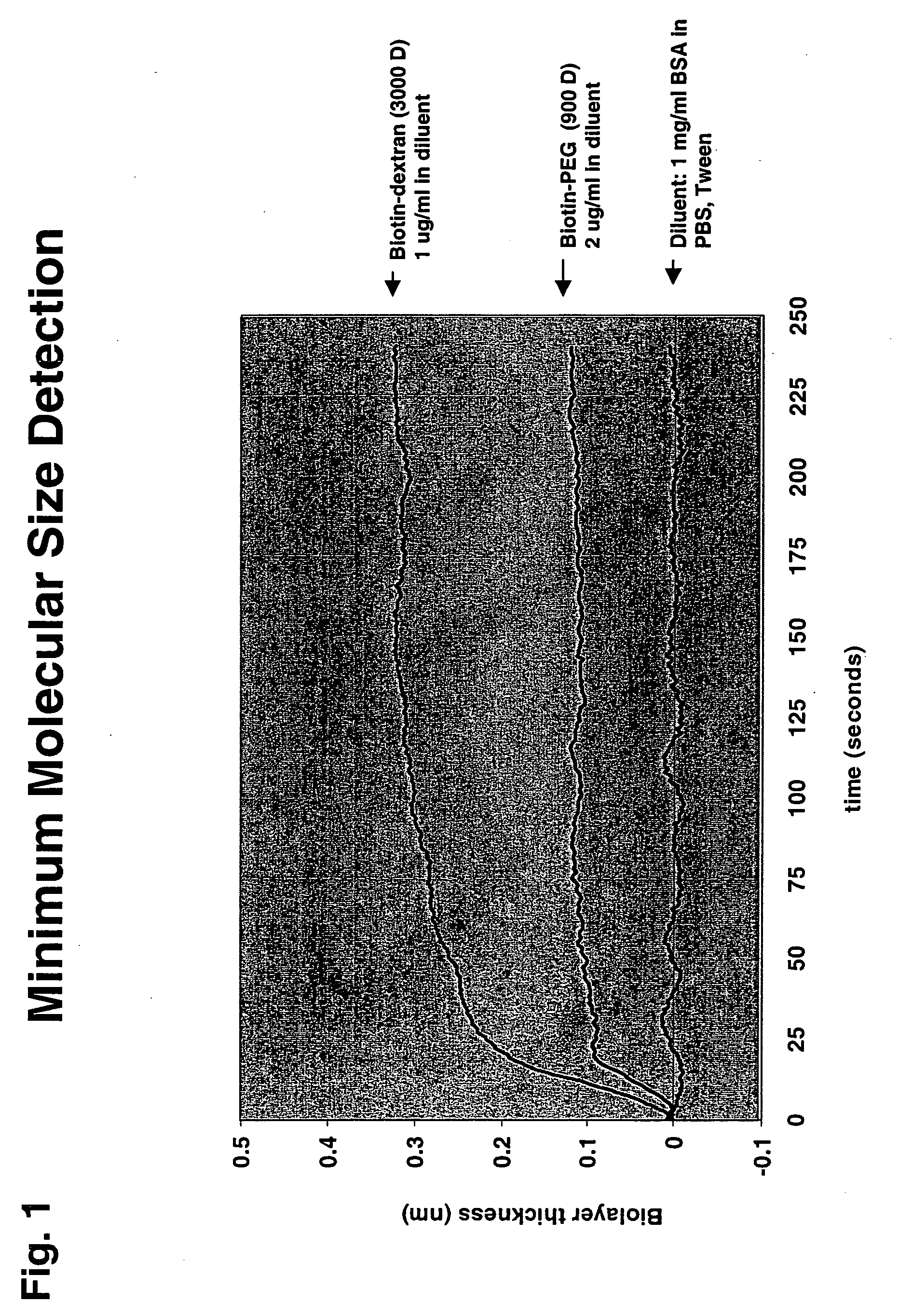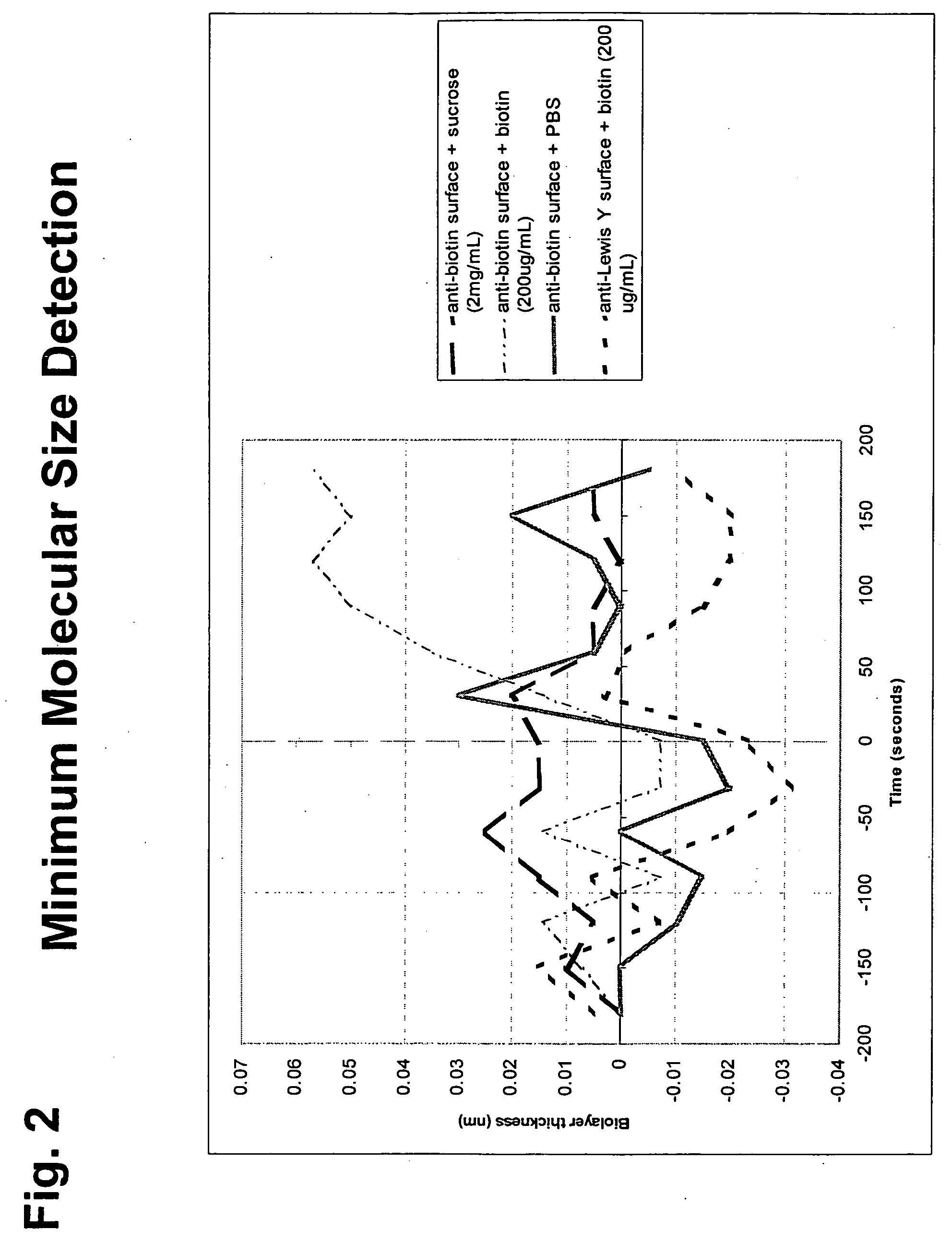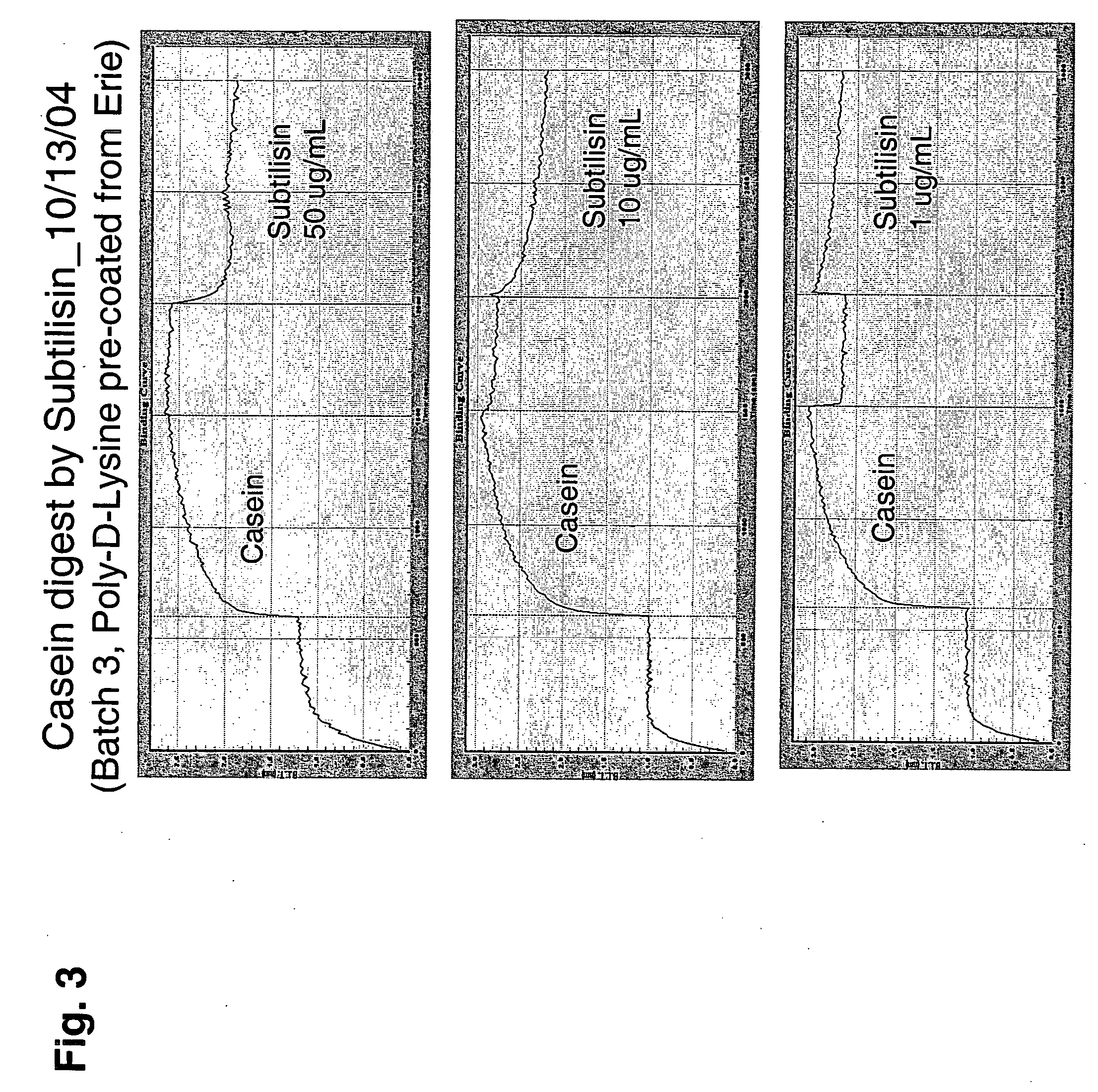Enzyme activity measurement using bio-layer interferometry
- Summary
- Abstract
- Description
- Claims
- Application Information
AI Technical Summary
Benefits of technology
Problems solved by technology
Method used
Image
Examples
example 1
BLI Molecular Weight Detection Characterization
[0047] The minimum molecular weight of a binding molecule that BLI can detect is illustrated in FIGS. 1 & 2. In FIG. 1 data of a biotin-PEG conjugate with a molecular weight of 900 Daltons binding to a streptavidin coated BLI sensor is depicted. The BLI sensor and methods for coating the sensor are described in detail in co-owned U.S. Non-provisional application Ser. No. 10 / 981,901, filed Nov. 4, 2004, for Hong Tan, et al., entitled “Fiber-Optic Assay Apparatus Based on Phase-Shift Interferometry,” Attorney Docket No. 24377-09611US. FIG. 2 shows the binding of biotin (M.W. ˜230 D) to a streptavidin coated BLI sensor. The data indicate that the described interferometry methods readily detect binding of molecules around 250 Dalton molecular weight, and that molecules in the 500 to 1000 Dalton molecular weight range generate a substantial change in optical layer thickness. Based on the minimum molecular size detection of BLI, one can conf...
example 2
Hydrolase Activity Measurements
[0049] Hydrolyases are enzymes that catalyze cleavage of C—O, C—N, C—C or phosphoric anhydride bonds.
[0050] Subgroup 1: Proteases (Enzymes Acting on Peptide Bonds)
[0051] Immobilized Substrate Format
[0052] This format features the protease substrate immobilized to the surface of the BLI glass fiber sensor using methods described in co-owned U.S. Non-provisional application Ser. No. 10 / 981,901, filed Nov. 4, 2004, for Hong Tan, et al., entitled “Fiber-Optic Assay Apparatus Based on Phase-Shift Interferometry,” Attorney Docket No. 24377-09611US (incorporated herein by reference) and below. The fiber is immersed in an enzyme-containing sample, and monitored for changes in optical layer thickness.
[0053] The basic assay protocol is to incubate a Bio-Layer Interferometer (BLI) sensor on which has been immobilized an enzyme substrate in an enzyme-containing solution enzyme. The amount of the substrate depletion is quantified by, e.g., a change in optical ...
example 3
Trypsin Activity Measurements Using Substrate Capture
[0069] Trypsin activity measurements are made using the substrate capture format and cytochrome C as a substrate. Cytochrome C is about 12 kDaltons in molecular weight and includes has 8 trypsin cleavage sites. A standard biotin-NHS derivative [Pierce Biotechnology, Rockford Ill.] is used to tag the cytochrome C. Coupling conditions employ standard phosphate buffered saline (PBS) pH 7 buffer. Biotin-NHS is mixed with cytochrome C at a molar coupling ratio of 5 to 1 (biotin to cytochrome C) typically resulting in one biotin substitution per cytochrome C molecule. Streptavidin-coated BLI sensors are prepared from 0.6 mm diameter glass fibers with a tantalum oxide layer of about 20 nm and a silicon dioxide layer of about 700 nm are dipped in a PBS solution containing 0.5 mg / ml of poly-D-lysine as described above. After 15 minutes at room temperature, the fibers are washed in PBS then immersed in a 1 mg / ml solution of bovine serum al...
PUM
 Login to View More
Login to View More Abstract
Description
Claims
Application Information
 Login to View More
Login to View More - R&D
- Intellectual Property
- Life Sciences
- Materials
- Tech Scout
- Unparalleled Data Quality
- Higher Quality Content
- 60% Fewer Hallucinations
Browse by: Latest US Patents, China's latest patents, Technical Efficacy Thesaurus, Application Domain, Technology Topic, Popular Technical Reports.
© 2025 PatSnap. All rights reserved.Legal|Privacy policy|Modern Slavery Act Transparency Statement|Sitemap|About US| Contact US: help@patsnap.com



